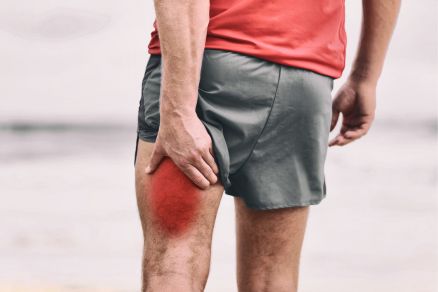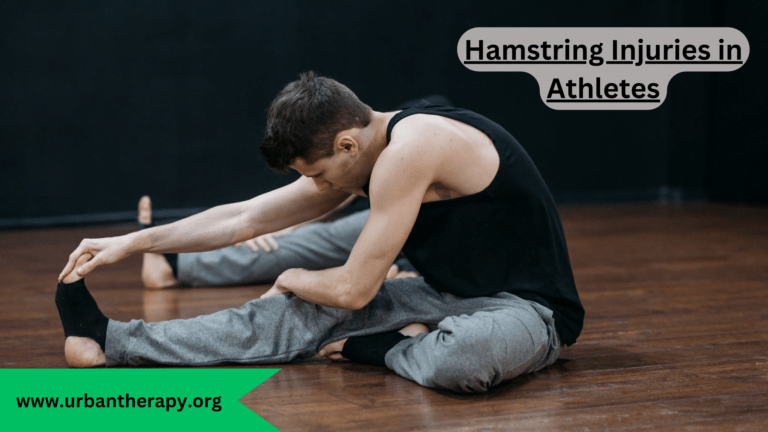Frozen shoulder, also known as adhesive capsulitis, is a common and painful condition affecting the shoulder joint. It involves inflammation, motion restriction, and shoulder and arm pain. Frozen shoulder occurs in 2-5% of the general population, mostly affecting people between 40-60 years old.
Understanding Frozen Shoulder
A frozen shoulder involves progressive stiffness and loss of range of motion in the shoulder joint. It often follows a pattern of three stages:
- Freezing Stage – Gradual onset of pain felt predominantly at night. Activities become increasingly difficult as motion is restricted. This stage can last from 6 weeks to 9 months.
- Frozen Stage – Pain may improve, but significant stiffness and restricted mobility in all directions of shoulder movement persists. It usually lasts 4-6 months.
- Thawing Stage – Shoulder motion slowly improves over several months to years. Pain is minimal, and function restores.
While the exact cause is unclear, risk factors like diabetes, hypothyroidism, Parkinson’s disease, and cardiac disease are associated with frozen shoulder. Trauma, surgery, and immobilization can also contribute. With appropriate treatment, most people fully regain their shoulder function.
What Causes Frozen Shoulder?
There are several theories on what leads to the development of a frozen shoulder:
- Inflammation – Chronic inflammation affecting the shoulder joint capsule and surrounding tissues results in thickening and contraction. This mechanically limits the range of motion.
- Immobility – Prolonged periods of shoulder inactivity lead to tightened connective tissue and loss of elasticity. This makes movement difficult when resumed.
- Scar Tissue – After injury or surgery, dense internal and external scar tissue can form and restrict normal shoulder motion.
- Metabolic Disorders – Medical conditions like diabetes, hypothyroidism, and Parkinson’s adversely impact connective tissues and may increase risk.
- Age – Loss of elasticity in tendons and joints as a result of aging combined with minor repetitive overuse makes the frozen shoulder more common in those over 40.
- Genetic Predisposition – Variations in molecular markers and proteins may genetically predispose some individuals to frozen shoulder.
While the exact mechanisms are still debated, a frozen shoulder evidently involves substantial disruption of the normal smooth gliding between layers that allow full, pain-free shoulder joint mobility.
Key Signs and Symptoms
Recognizing the main symptoms of a frozen shoulder can prompt appropriate treatment:
- Gradual onset of dull, aching shoulder pain – Typically starts in a small area and spreads. Often intense at night.
- Severely restricted shoulder mobility – External rotation and overhead motions are most limited. Reaching behind the back may be difficult.
- Stiffness following inactivity – Significant stiffness after waking up or sitting for prolonged periods.
- Normal X-ray findings – Imaging will show no major anatomical abnormalities.
- Eventual improvement – Pain and range of motion gradually improve in most cases, though it may take months to years.
- Risk factors – Diabetes, thyroid issues, Parkinson’s disease, and cardiac disorders increase risk.
- Previous injury – Trauma, surgery, and immobilization are linked to a frozen shoulder.
- Age 40-60 – Peak incidence is between the ages of 40 and 60.
Careful evaluation of the history and pattern of symptoms can aid diagnosis when physical exams reveal restricted shoulder mobility and pain.
Conservative Treatment Approaches
For most patients diagnosed with frozen shoulder, these conservative treatment methods are effective at restoring mobility and function:
- Medications – Oral NSAIDs, topical creams, lidocaine patches, or corticosteroid shoulder injections can relieve inflammation and pain.
- Physical therapy – Stretching, joint mobilization, therapeutic exercises like pilates, and modalities like heat, ice, ultrasound, and electrical stimulation help regain motion and strength.
- Home exercise – Following a structured home program for stretching and shoulder exercises is key between physical therapy visits.
- Posture correction – Addressing rounded shoulders, neck dysfunction, and poor posture reduces strain on the shoulder joints. Proper body mechanics are also vital.
- Activity modification – Avoiding repetitive overhead motions and heavy lifting prevents exacerbating symptoms while allowing healing.
- Stress management – Controlling pain levels during flares using relaxation techniques helps prevent compensation injuries like neck strain. Managing associated stress supports recovery.
- Shoulder manipulation – Under anesthesia, manually moving the shoulder through its full range of motion can help stretch the capsule.
With a commitment to these conservative treatments for 6-12 months, most patients see significant improvement and can resume normal function. Surgery may be warranted in refractory cases.
Surgical Interventions
If a frozen shoulder persists despite focused conservative treatment for 6-9 months, one of these surgical procedures may be beneficial:
Arthroscopic Capsular Release
This outpatient procedure involves inserting a tiny camera (arthroscope) through small incisions around the shoulder joint. The surgeon then uses arthroscopic tools to cut through scar tissue and contracture in the joint capsule to release stiffness. Early aggressive physical therapy after surgery facilitates faster recovery.
Benefits:
- Less invasive procedure with smaller incisions
- Quicker recovery and return to activities
- Lower risk of complications
Limitations:
- Does not address extra-articular causes
- Requires extensive participation in post-op rehab
Open Capsular Release
A more extensive open surgical approach cuts through the joint capsule and releases tight scar tissue around the shoulder. This allows for complete visualization and release of contractures. Physical therapy starts approximately 6 weeks after open surgery due to recovery time.
Benefits:
- Allows full access to treat all causative tissue
- One surgery often resolves the problem
Limitations:
- Invasive with a larger incision
- Higher risk of complications
- Slower return to function after surgery
The orthopedic surgeon will determine the optimal surgical technique based on the individual’s specific anatomy and condition. Factors like diabetes control, thyroid function, age, activity level, and anatomical changes are also considered. Surgery can provide significant pain relief and restore range of motion when conservative care does not adequately resolve a frozen shoulder.
Physical Therapy for Post-Operative Frozen Shoulder Rehabilitation
Physical therapy is a critical component of frozen shoulder recovery following surgery. A rehabilitation program or physical therapy for frozen shoulder focuses on:
- Gentle range of motion exercises – Gradually progress pendulum, passive, active assisted, and ultimately active exercises to improve mobility.
- Stretching tight structures – Use stretches that target the posterior capsule, anterior capsule, and internal rotators.
- Rotator cuff and scapular strengthening – Once ranging of motion permits, incorporate theraband exercises.
- Postural education – Teach proper posture, shoulder mechanics, ergonomics, and activity modifications.
- Pain modalities – Use ice, heat, electrotherapy, etc., to control pain and inflammation as needed.
- Functional retraining – Integrate exercises and activities using the arm into daily life.
Physical therapists ensure patients progress through each rehabilitation phase appropriately after surgery without overstressing healing tissues. This lays the foundation for the best possible recovery of shoulder function.
Home Exercise Program
Along with professional physical therapy, following a structured home exercise program is vital for maximizing results after frozen shoulder surgery. Daily home exercises targeting flexibility, strength, and function facilitate recovery. Consistency is key.
Here are some sample recommended home exercises:
- Pendulum stretches – Bend at the waist and relax the arm, swinging gently to mobilize the shoulder.
- Supine external rotation – Lay on your back and turn your arm out with assistance, stretch within the comfortable range.
- Behind-the-back internal rotation – Grasp the affected arm behind the back with the other hand, gently stretch, and hold the internally rotated position.
- Active-assisted forward flexion – Use the other arm to lift the affected arm forward as high as possible, supporting the upper arm.
- Isometric internal and external rotation – With the elbow fixed at the side, push the hand in and out against the resistance of the other hand.
- Scapular retraction – Pinch shoulder blades together, then return to a relaxed posture.
Aim for multiple short sessions of the home exercise program daily. Proper technique, stretching tolerance, and avoiding overexertion is key. Check-in with the physical therapist regularly to advance and modify the exercises as needed. Diligent home exercise fosters optimal recovery.
Lifestyle Modifications for Managing Frozen Shoulder
In addition to medical and physical therapy treatments, making certain lifestyle adjustments both before and after frozen shoulder surgery can facilitate rehabilitation:
- Use ice and heat – Alternating ice and heat helps relieve pain and loosens tissues.
- Take frequent breaks at work – Avoid repetitive motions and adjust work duties and ergonomics.
- Utilize labor-saving aids – Use long-handled reachers and tools to avoid straining your shoulder.
- Sleep positioned upright – Place a wedge under the mattress to elevate the upper body and reduce night pain.
- Wear a sling as needed – Use a supportive sling to rest the shoulder after activity and for comfort.
- Stop smoking – Smoking delays recovery from surgery. Discuss smoking cessation before surgery.
- Follow activity restrictions – Limit lifting, pulling, pushing, reaching overhead, and other aggravating motions.
- Stress management – Make time for relaxation and utilize social support and counseling resources if needed.
Being proactive with rest, modifications, and stress reduction while diligently performing therapies and exercises helps patients recover after surgical release for frozen shoulder.
Preventing Adhesive Capsulitis
While some risk factors for frozen shoulder, like age and chronic medical conditions, can’t be avoided, certain proactive measures may help reduce the chances of developing this painful condition:
- Maintain shoulder flexibility – Stretch gently and keep your shoulders active. Avoid prolonged immobilization.
- Manage chronic diseases – Follow treatment plans closely for diabetes, thyroid disorders, and Parkinson’s.
- Use proper posture and ergonomics – Prevent rounded shoulders and keep wrists straight when typing.
- Avoid repetitive strain – Take breaks, adjust activities, and use healthy mechanics for lifting.
- Treat injuries appropriately – Rest injured shoulders briefly, then gradually resume full motion with physical therapy guidance.
- Stay physically active – Build strength, stamina, and flexibility with regular exercise.
- Heat and cold therapy – Heat before exercise and cold after help proactively manage occasional soreness.
Following these basic shoulder health tips cannot guarantee the prevention of a frozen shoulder but may decrease the likelihood of developing adhesive capsulitis.
Frozen Shoulder Recovery Timelines and Results
Frozen shoulder follows a gradual onset, intensely painful and stiff middle stage, and final phase of slowly improving motion and function. The condition can be frustrating to manage. Understanding general recovery timelines provides a helpful perspective.
Conservative Treatment Course
- Initial physical therapy evaluation starts once the range of motion loss and pain is recognized.
- 6-9 months of active participation in exercise, stretching, joint mobilization, ice/heat, etc., is typically needed.
- Pain is usually controlled in 2-4 months, but stiffness persists for 6 or more months.
- Complete recovery of range of motion and strength is achieved by 12-18 months in most cases.
Post-Operative Rehabilitation
- Gentle rehab exercises generally start 6 weeks after open surgery or within days after arthroscopic release.
- 3-4 months focused on regaining mobility and light strengthening.
- 6-9 months of dedicated therapy helps most achieve 85-90% function.
- Full shoulder motion and strength were restored by 12-15 months.
So, while the prolonged frozen phase of around 6 months can feel discouraging, most patients see marked improvements by 9-12 months with diligent conservative or post-operative treatment. Regaining pain-free shoulder function requires patience. Support resources help manage frustration and anxiety during the recovery process.
Frozen shoulder is a common cause of shoulder pain and disability, especially in middle age. It involves progressive loss of normal shoulder range of motion and significant pain and stiffness. Though the exact mechanisms causing frozen shoulder are still debated, associated factors like diabetes, inactivity, and trauma likely contribute.
Conservative treatments focused on stretching, therapeutic exercises, spinal posture correction, anti-inflammatory modalities, and activity adjustments help most patients recover function within 12-18 months. Manipulation under anesthesia or surgery may be considered for a stubborn frozen shoulder. Post-operative physical therapy is crucial. While prevention is challenging, maintaining shoulder flexibility and promptly treating injuries appropriately may decrease risks. Patience and diligently working with health professionals leads to an improved quality of life for most dealing with frozen shoulder.
FAQs
The key symptoms of a frozen shoulder are gradual onset of shoulder pain and stiffness, severely restricted range of motion (especially external rotation), difficulty reaching behind the back, and pain that is worse at night. There are often no abnormalities seen on X-rays.
Frozen shoulder progresses through three main stages – the freezing stage involves gradually increasing pain and stiffness over weeks to months. The frozen stage lasts 4-6 months with significant restricted mobility but less pain. The thawing stage is a gradual improvement in motion and function over several months to years.
People between the ages of 40-60 have the highest risk of frozen shoulder. Other risk factors include diabetes, hypothyroidism, Parkinson’s disease, cardiac disease, shoulder trauma, and prolonged immobilization of the shoulder joint.
Common conservative treatments include NSAIDs or cortisone injections, physical therapy exercises, stretching, joint mobilization, ice/heat modalities, posture correction, activity modification, stress management techniques, and manipulation of the shoulder under anesthesia.
If conservative treatments for 6-9 months do not resolve stiffness and pain, arthroscopic capsular release or open surgical release may be warranted. The surgeon carefully evaluates individual factors to determine the appropriate surgical approach.
Early physical therapy focusing on gentle stretches, mobility exercises, scapular strengthening, posture retraining, modalities, and functional reintegration is crucial for optimal recovery after surgical release.
With conservative treatment, recovery can take 12-18 months. After surgery, full motion and strength are typically restored in 12-15 months with diligent physical therapy. Most patients see marked improvements around the 9-12 month mark.
While some risk factors like age can’t be avoided, steps like maintaining shoulder flexibility, managing chronic health conditions, preventing overuse injuries, promptly treating trauma, and staying active may help decrease risks.
Pendulum stretches, external rotation stretches, active assisted flexion, internal/external rotation strengthening, scapular retractions, and shoulder stabilization exercises are typically prescribed by physical therapists.
Using heat/ice compresses, taking frequent breaks at work, sleeping in an upright position, wearing a sling as needed, avoiding repetitive motions, following activity restrictions, and managing stress are beneficial.






